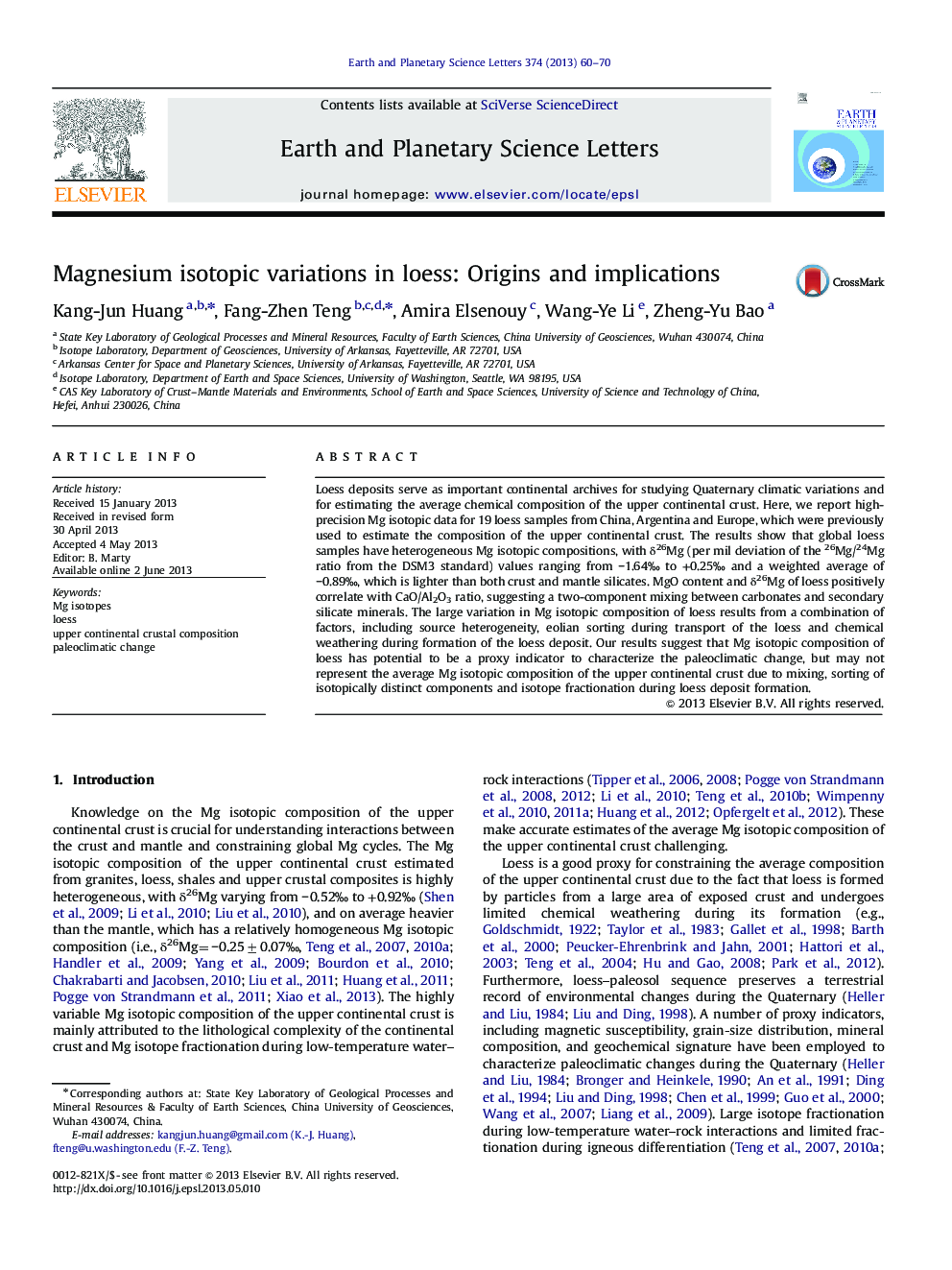| Article ID | Journal | Published Year | Pages | File Type |
|---|---|---|---|---|
| 6430132 | Earth and Planetary Science Letters | 2013 | 11 Pages |
â¢Magnesium isotopes are analyzed for globally distributed loess.â¢Large Mg isotopic variation in loess is controlled by their mineralogy: clay versus carbonate.â¢Magnesium isotopes in loess may be a great tracer of paleoclimatic change.
Loess deposits serve as important continental archives for studying Quaternary climatic variations and for estimating the average chemical composition of the upper continental crust. Here, we report high-precision Mg isotopic data for 19 loess samples from China, Argentina and Europe, which were previously used to estimate the composition of the upper continental crust. The results show that global loess samples have heterogeneous Mg isotopic compositions, with δ26Mg (per mil deviation of the 26Mg/24Mg ratio from the DSM3 standard) values ranging from â1.64â° to +0.25â° and a weighted average of â0.89â°, which is lighter than both crust and mantle silicates. MgO content and δ26Mg of loess positively correlate with CaO/Al2O3 ratio, suggesting a two-component mixing between carbonates and secondary silicate minerals. The large variation in Mg isotopic composition of loess results from a combination of factors, including source heterogeneity, eolian sorting during transport of the loess and chemical weathering during formation of the loess deposit. Our results suggest that Mg isotopic composition of loess has potential to be a proxy indicator to characterize the paleoclimatic change, but may not represent the average Mg isotopic composition of the upper continental crust due to mixing, sorting of isotopically distinct components and isotope fractionation during loess deposit formation.
